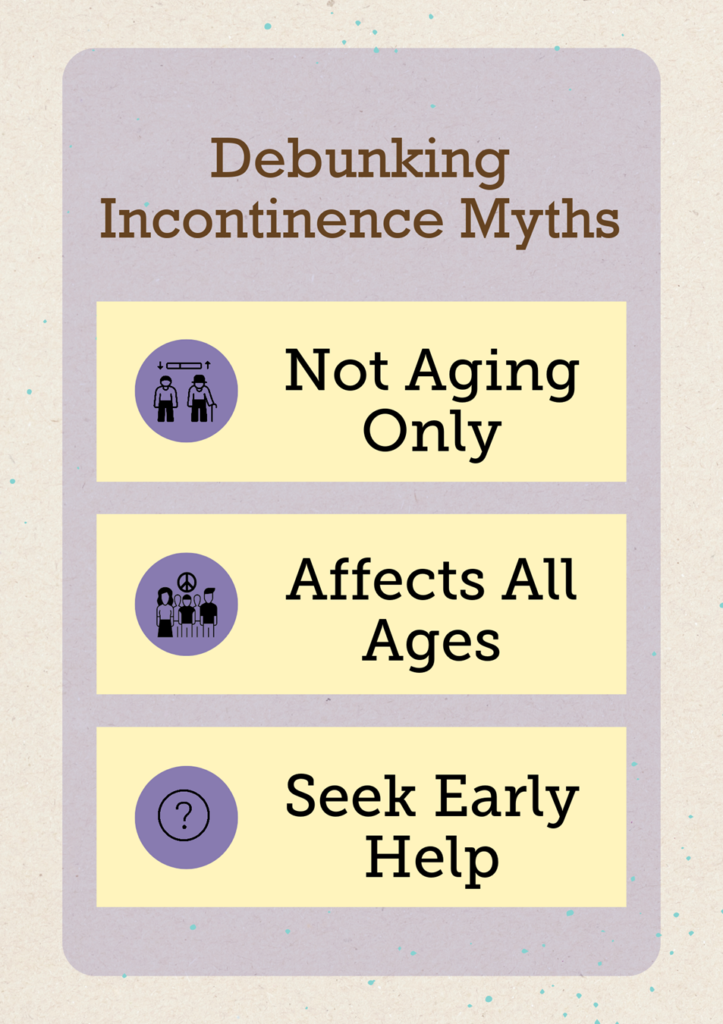Urinary incontinence affects millions, impacting daily life and self-esteem. But it's not just a normal part of aging. It's a condition that can affect anyone, including young and middle-aged individuals. Raising awareness is crucial because many people often think of it incorrectly. Debunking the myth that it's merely an aging issue helps everyone understand the need for early intervention and appropriate urinary incontinence treatment options. Whether you or someone you know is struggling, learning about urinary incontinence types and causes can make a big difference.

The Basics of Urinary Incontinence
What is urinary incontinence? It's the loss of bladder control leading to involuntary urine leakage. It comes in different forms, like stress incontinence, which is when physical activity like coughing causes leakage, or urge incontinence, marked by a sudden need to urinate. There's even mixed incontinence, combining symptoms. Many believe myths about this condition, such as it being untreatable. Wrong! Understanding the correct information makes addressing it vital as it improves your quality of life. Ignoring the effects of urinary incontinence on quality of life can lead to unwanted complications.
Unveiling the Causes and Symptoms
Lifestyle plays a big role in urinary incontinence causes. Factors like stress, obesity, poor diet, and fluid intake contribute significantly. Medical conditions such as pregnancy, childbirth, menopause, and aging also matter. Recognizing the symptoms of urinary incontinence is the first step to seeking help.
Common symptoms include:
- Frequent urination
- Sudden, strong urges to urinate
- Leakage during physical activity
It's crucial to pay attention if these symptoms occur frequently, especially if they interfere with daily activities. If they do, seek medical advice promptly. Often, embarrassment leads to delay, but the sooner a professional evaluates you, the better the outcome. Seeking professional help for urinary incontinence is essential for proper management and peace of mind.
The Importance of Timely Diagnosis and Treatment
Ignoring urinary incontinence diagnosis methods can lead to worsening symptoms and lifestyle changes. Diagnostic methods include medical history reviews and urine tests to rule out infections. It's beneficial to consult healthcare professionals to explore urinary incontinence treatment options that best suit individual needs. Addressing symptoms early minimizes risks, making it easier to manage daily life effectively.
Lifestyle Adjustments and Treatment Solutions
Managing this condition involves several approaches. Here are some handy tips: - Exercise regularly, such as pelvic floor exercises, to strengthen the muscles involved - Monitor fluid intake carefully to manage symptoms
Medical treatments include medications and interventions tailored to urinary incontinence types. Surgery might be considered for severe cases. Modern technologies provide advanced solutions too, helping people resume their normal lives. Living with urinary incontinence, while challenging, can be managed through proper guidance and lifestyle changes.
Aurum Men’s Health: Comprehensive Approach
Urinary incontinence can be a challenging issue, but effective management and improved quality of life are within reach. At Aurum Men's Health, our specialists understand the sensitive nature of this condition and offer compassionate, personalized care tailored to your specific needs. From diagnosis to treatment, we're here to guide you every step of the way. Don't hesitate to schedule a consultation and take the first step towards regaining control and confidence.




